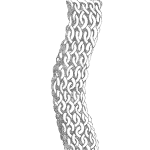
One of the most commonly asked questions about quality engineering is “What is the difference between quality assurance and quality control?”
Your Reliability Engineering Professional Development Site
A listing in reverse chronological order of articles by:
by Ray Harkins Leave a Comment

One of the most commonly asked questions about quality engineering is “What is the difference between quality assurance and quality control?”

What are the covariances of Kaplan-Meier reliability estimates at different ages? I need them for the variance of actuarial demand forecasts and for confidence bands on reliability. I thought cohort reliability estimate variances and covariances in the previous article were a good idea. How good? Not as good as bootstrap and jackknife resampling alternatives!
The Kaplan-Meier reliability function estimator uses right-censored and grouped time-to-failure counts in periodic cohorts (rows in table 1). The Nelson-Aalen cumulative failure rate function estimators are theoretically independent [Aalen, Nelson], but not for some examples. The Kaplan-Meier reliability and actuarial failure rate function estimates at different ages are dependent, so their covariances matter to actuarial forecasts and confidence bands on reliability.
[Read more…]by Ray Harkins Leave a Comment

Among students beginning their examination of reliability engineering, one question pops up repeatedly: Where did all these reliability life models come from? On one hand, reliability engineering is deeply entrenched in statistical models … Weibull, exponential, etc. But these models alone, do not fully explain the product life models. There is still a missing piece: the Physics of Failure (PoF).
PoF and reliability models are closely connected concepts, as they both relate to the ability of products, processes, and systems to perform their intended function consistently over time. [Read more…]
by Carl S. Carlson Leave a Comment

One of the more challenging aspects of FMEA is the subject of Occurrence. Part of every FMEA standard or procedure is the assessment of Occurrence based on an agreed-upon scale. Here are some pointers for when and how to use occurrence in an FMEA.
We’ll start with a definition. The Oxford English dictionary defines “occurrence” as “the fact or frequency of something happening.”

The well-known variance of the Kaplan-Meier reliability function estimator [Greenwoood, Wikipedia] can drastically under-or over-estimate variance. The covariances of the Kaplan-Meier reliability pairs at different ages are ignored or neglected. Variance errors and covariance neglect bias the variance of actuarial demand forecasts. Imagine what errors and neglect do to confidence bands on reliability functions.
[Read more…]by Ray Harkins Leave a Comment

Having worked in manufacturing quality for the great majority of my career, with a few tentacles into the field of reliability, I’ve considered many comparisons between the two fields, with of course, my unconscious biases favoring quality. One interesting comparison, for instance, is between job postings for similar positions in these related fields.
[Read more…]
My first task at Apple Computer was to recommend the warranty duration for the Apple II computer. Apple didn’t have a warranty! So, I looked at competitors’ warranties and recommended the same, one year. I wish I had known Apple’s computers’ and service parts’ reliabilities before that recommendation; I would have used actuarial forecasts of warranty returns to compare alternative warranties. Apple’s hardware warranty is still one year. Is that equitable to Apple, its customers, and society?
[Read more…]by Ray Harkins Leave a Comment

Reliability engineers and quality engineers both work to ensure that products and systems are functioning effectively and efficiently. However, they have slightly different focus areas and goals.
The primary focus of reliability engineering is designing systems that are dependable and able to function consistently over time. This may involve identifying and addressing potential sources of failure, implementing preventive maintenance protocols, and conducting testing to ensure that the system is functioning as intended. The ultimate goal of reliability engineering is to minimize downtime and ensure that the system is available for use when needed.
[Read more…]by Larry George Leave a Comment

Imagine observing inputs and outputs of a self-service system, without individual service times. How would you estimate the distribution of service time without following individuals from input to output? The maximum likelihood estimator for an M/G/Infinity self-service-time distribution function from ships and returns counts works for nonstationary arrival process M(t)/G/Infinity self-service systems, under a condition. A constant or linearly increasing arrival (ships) rate satisfies the condition. If you identify outputs by failure mode then you could estimate reliability by failure mode or quantify reliability growth, without life data. [Read more…]
by Carl S. Carlson Leave a Comment
I am often asked about the application of detection in FMEAs. When and how to assess for the risk of detection can be confusing. Here are some pointers for when and how to use detection in an FMEA.
by Ray Harkins Leave a Comment

Another of the most commonly asked questions about quality engineering is “What is Six Sigma and how is it used in quality engineering?”
Six Sigma is a data-driven approach to continuous improvement that aims to reduce defects and variability in products, processes, and systems. It is based on the idea that by identifying and addressing the root causes of defects and variability, organizations can significantly improve the quality of their products and processes. Six Sigma is used to identify and eliminate defects and variability by collecting and analyzing data, identifying patterns and trends, and implementing process improvements.
[Read more…]by Larry George Leave a Comment

Nonparametric, age-specific field reliability estimates helped deal with a Customer’s bad experience using a Hewlett-Packard part in the Customer’s product: 110 part failures out of 3001 shipped in the first five months. Comparison of HP population vs. Customer reliability estimates showed the Customer’s infant mortality was not typical. Using population ships and failures or returns data eliminated sample uncertainty from the HP population field reliability estimate.
[Read more…]by Ray Harkins Leave a Comment

Reliability engineering and quality engineering are closely related disciplines that both focus on ensuring that products, processes, and systems are efficient, effective, and meet the required standards. As such, there are several ways in which reliability engineers can improve their skills by learning about quality engineering.
[Read more…]by Ray Harkins Leave a Comment

For the seasoned manufacturing quality professional, First Article Inspection (FAI) is a familiar process performed after the first production run of a new or redesigned part. But for those outside of or newer to the quality profession, the requirements of FAI may provoke a lot of questions and uncertainty.
In short, FAI is the process of planning, conducting and reporting the verification of a production process. This verification “closes the loop” between the customer’s expectations — usually described on the part’s engineering drawing — and the actual output of the supplier’s process.
[Read more…]by Carl S. Carlson Leave a Comment
As we celebrate the new year, I am republishing an article I wrote last year, titled “The Future of Reliability Engineering,” as part of the Inside FMEA series. This article applies equally well to FMEA, as you will see.
Sometime in 2023, I will write an article titled “The Future of FMEA.” But, first, I want to hear from readers. Please write me with your ideas on what should be included in the future of FMEA. You can reach me at Carl.Carlson@EffectiveFMEAs.com
Wishing everyone on Accendo Reliability a happy and healthy new year, and best wishes for high reliability and effective FMEAs!
“Destiny is no matter of chance. It is a matter of choice. It is not a thing to be waited for, it is a thing to be achieved.” – William Jennings Bryan